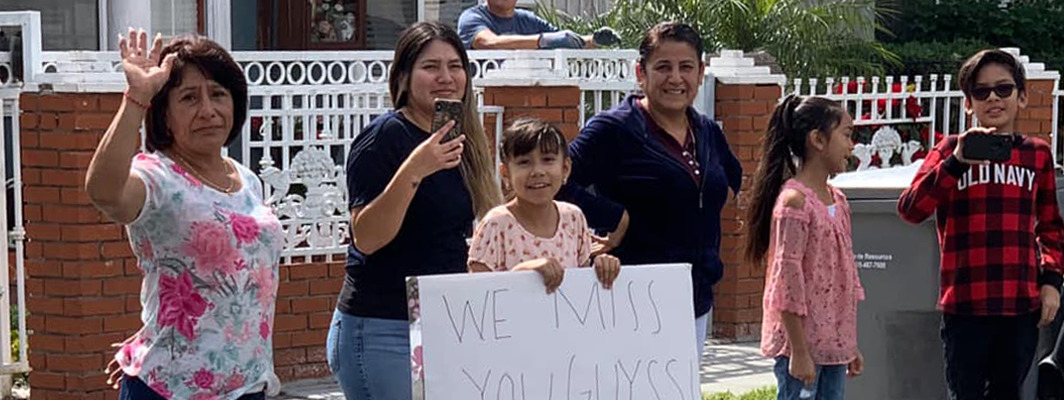
May 27, 2020 | By My Nguyen
With digital learning likely to stretch into the fall due to COVID-19, how can we ensure every student has equitable access to powerful learning opportunities?
The crisis has shone a harsh light on the digital divide in the United States, surfacing thoughtful debate and long-overdue discussion around the equity gap. Millions of students—particularly those from rural communities, low income families, immigrant families, and families of color—lack a reliable at-home internet connection, a critical need to continue their powerful learning outside of the classroom.
For superintendents in the Digital Promise League of Innovative Schools, this is an opportunity to examine and reimagine their education systems under new constraints.
“Right now in America, you don’t have a choice but to really look at who has and who doesn’t have,” said Marlon Styles, superintendent of Middletown City School District in Ohio. “Personally, I don’t believe people took the equity and access gap as seriously as they should have in the past because it wasn’t smacking them in the face.”
In Middletown, where every student qualifies for free and reduced lunch, Styles and his district leaders and staff are responding to families’ basic needs first, and working to address the community’s most urgent and pressing challenges.
“Folks are trying to purely survive right now,” said Styles. “The pressure put on a family, to tell them [they’re] responsible for pushing and driving [their] kid to try to engage in these activities, is definitely a barrier that we struggle with. On top of that, knowing we’ve got an equity gap that exists in our district and that about 1,200 of our kids don’t even have access [to technology and the internet] was a tough pill to swallow. So, we’ve been trying to advocate for those mobile hotspots. We continue to just stretch our brains creatively about how to, in a very safe way, get those students access to resources.”
Click to hear Superintendent Marlon Styles discuss how Middletown City School District is advocating for long-term solutions to address digital inequity.To get students connected, the district installed community WiFi access points at each of their schools and their local football stadium. And earlier this month, Styles advocated on a national stage by testifying before the House Committee on Education and Labor about remote learning and the reality for students and families in his community, addressing the equity gap, digital divide, learning loss, and other requisites for positive learning environments.
A lack of connectivity is a challenge that Gudiel Crosthwaite, superintendent of Lynwood Unified School District in California, is all too familiar with.
Crosthwaite said, “[Lynwood is] a community with very limited resources, completely underserved. Our plan this year was to roll out devices so that we could become one-to-one by the end of the year. So, we had the devices, but the internet connection has been challenging. We are still trying to figure out how we ensure that students truly have access because it does us no good just to have devices, and it’s hurting kids because they’re not able to log-in or check-in with their classes.”
The challenge also extends to the district’s teachers.
“We also assumed that a lot of our educators also had [internet] access, and we provided devices. What we discovered during this process is that… some of them just didn’t even have internet at home, or at least a WiFi option, so that they can connect their district-issued device,” Crosthwaite shared.
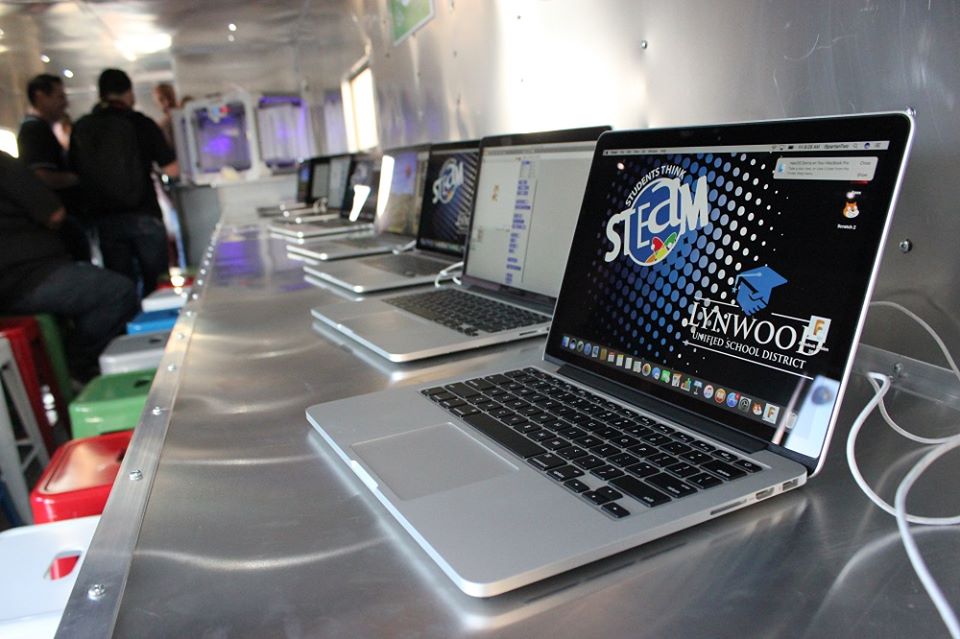
Lynwood Unified School District had planned for each student to have a personal device by the end of the year, but school closures accelerated their timeline.
Obstacles don’t necessarily end when connectivity is available, either. In Owsley County, Kentucky, where the median household income is $15,805, many families are unable to afford the monthly fees.
“The biggest problem that we’ve had with the few kids who don’t have access are the contracts that the companies have to have to get those installed. So, in other words, we’re looking at a two-year contract for getting the mobile hotspot set up in homes that are eight or 10 miles away from our little town,” said Tim Bobrowski, superintendent of Owsley County Schools.
He added, “We have the bus drivers and the cooks taking homework and packets back and forth. That kind of helps us all try—and then the key word is try—to get our kids to respond positively.”
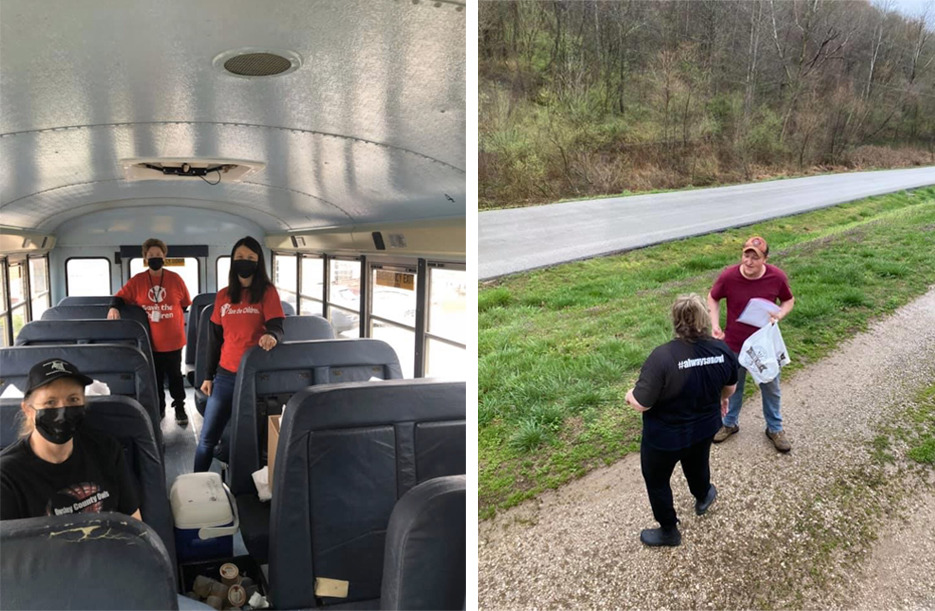
Owsley County Schools Food Service employees deliver meals and packets to students across the district.
Without access to the internet, students also miss out on meaningful interactions with teachers and peers that are critical for social, emotional, and mental well-being. To offer support in this area, Lynwood Unified School District set up a mental health hotline.
Crosthwaite said, “We have our social workers and counselors responding to answer those calls. Our district has a robust health collaboration with about 50 different agencies that provide additional services and support to our students and families, [including] support for drug deterrence, mental health, and other issues that may come about in the community.”
“Trying to serve as a bridge between students and families and these agencies has been very critical for us,” he added. “As people get displaced from work, and they have family members or loved ones who are ill or not able to cope with some of the other stressors, we’re reaching out to our partners to expand this as a resource for our community. Internally, we have a lot of capacity; but the reality is that we’re not necessarily the experts in those fields. Being able to rely on them in times like this is critical.”
Michael Nagler, superintendent of the technology-forward Mineola Union Free School District in New York, believes schools should prioritize students’ social and emotional needs now while looking ahead to the fall.
“Isolation for anyone is very difficult, and we really need teachers to call kids, make contact, check in, make sure they’re okay, and refer [them] to people who can help. That’s got to be the emphasis now, in the short and long term,” he said. “The emphasis has to be on the social-emotional welfare of our kids. It can’t be on academics, because it’s not the same thing as school.”
In April, the district hosted a virtual spirit week to boost morale and maintain a sense of community while classes are apart.
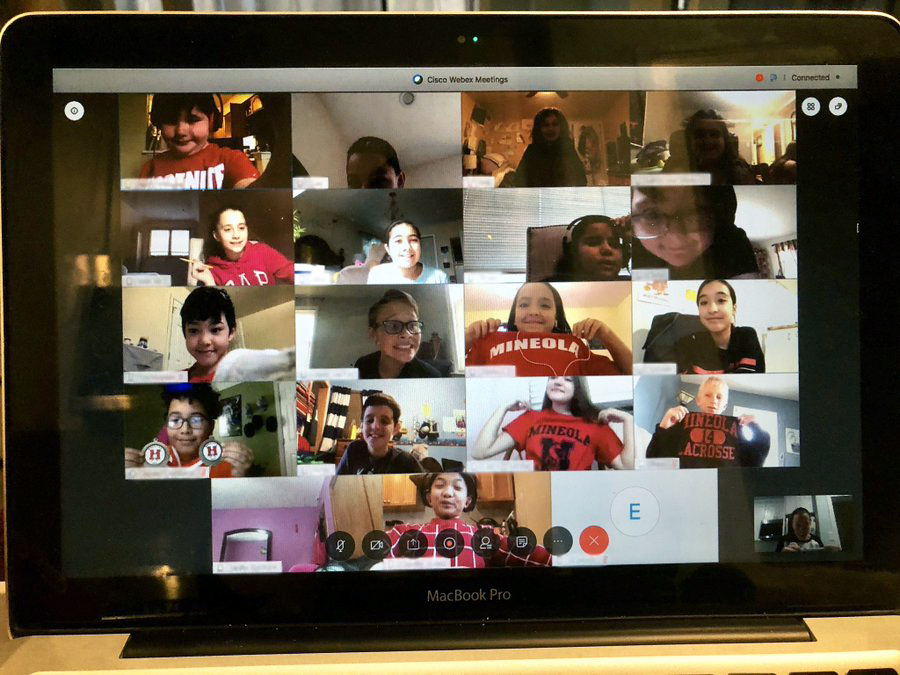
Students show their Mineola pride by wearing school colors on Zoom for the first day of spirit week. (Note: This photo has been edited to blur student names.)
Nagler said, “We had different activities, and I made a video every day to kick it off. I know my teachers are doing a lot—I saw a couple of them had Costume Day or Mustache Day, and every kid in the class when they logged on had their costume or their mustache on—and it just brings a sense of community.”
Click to hear Superintendent Michael Nagler explain why Mineola is prioritizing students’ mental and emotional well-being during closures.Mary Wegner, superintendent of Sitka School District, agrees that positive connections are crucial during this time. “We are trying to balance academic as well as social-emotional learning. We like to say we’re ‘socially connected, physically distant,’ instead of social distancing, because human interaction is just so important.”
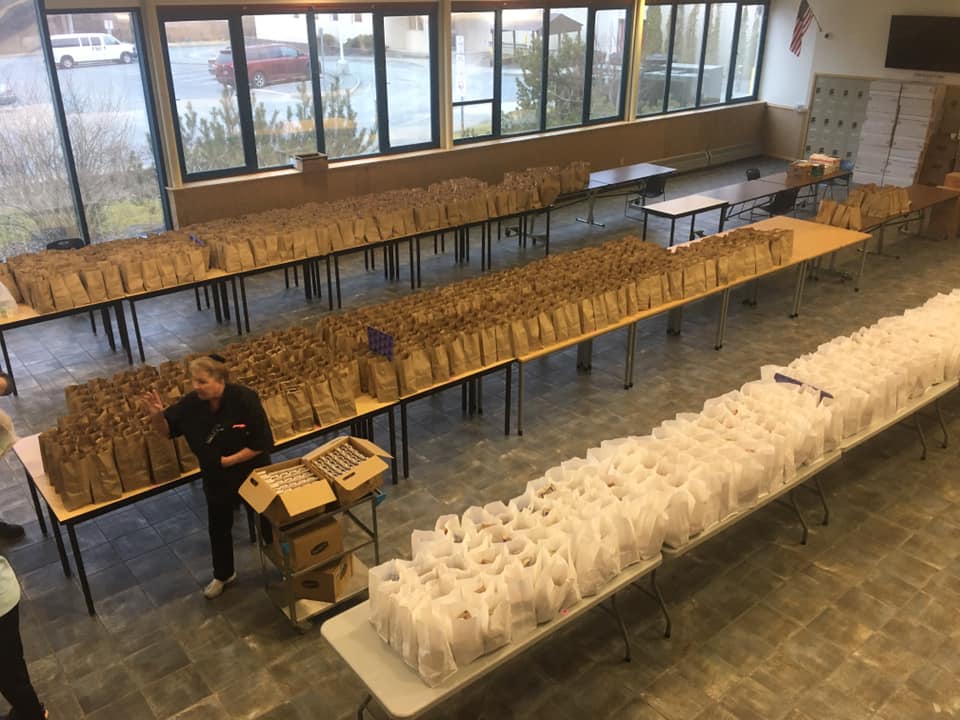
Sitka School District prepares for meals on April 7, 2020. Students receive four days of meals during distribution.
In addition to providing food for families, the Alaska-based district is working to ensure that every student experiences a daily, positive connection with a caring adult or member of the school community. “Mental health providers are doing circle groups with some of our at-risk students,” Wegner added.
Marlon Styles believes these connections are simply an extension of the “high-quality cultures that exist in school buildings.”
“We’re good at this kind of stuff in education,” he said. “I’ve seen a little bit of everything—and I’m not just speaking about Middletown, I’m talking about southwest Ohio. I’ve seen teachers mailing personal letters to families, obviously targeted for the student, to engage them and stay connected. I’m seeing our middle school counselors reach out to kids and have virtual counseling groups, which I think is pretty creative. The intent behind it, again, is that social-emotional piece, to make sure you’ve got a positive role model to stay connected to during this time.”

From left: 1. Staff from Creekview Elementary School in Middletown post selfies during the district-wide fire drill. 2. Students leave messages drawn with sidewalk chalk to thank Middletown bus drivers.
Styles added, “As our bus drivers get out to the different drop-off stops for meal distribution, we’ve seen messages written to them and pictures drawn with sidewalk chalk, sending them a thank you. Prior to spring break, we had a virtual district-wide fire drill. Educators are really good at having fun in the walls of our school. It’s just been a joy to see educators across the country, on social media specifically, just celebrating the positive cultures and what they do inside their school buildings with kids, because even from a distance it’s been a pure joy.”
League superintendents are committed to viewing this time as an opportunity to demonstrate the importance of courageous and empathetic leadership, especially around issues of access.
In an effort to advance digital equity and close the Digital Learning Gap, the League of Innovative Schools released a statement collectively calling for universal access to the internet and technology for every student and their families.
In addition to universal internet access, the network is calling for an expansion of the E-Rate program, special funds to support procurement and teacher training for public school districts, and measures to ensure sustained access throughout a student’s K-12 experience.
“Anyone can lead when there are a lot of resources, but leading during a crisis is really what it’s all about,” Crothswaite says. “It’s an opportunity for us to revisit and reflect on our current practices and ask ourselves, ‘How do we do a better job of centering our conversations on our kids? On our staff? And the community?’”
Click to hear Superintendent Gudiel Crosthwaiste describe Lynwood’s COVID crisis campaign, an initiative to expand the district’s food pantry.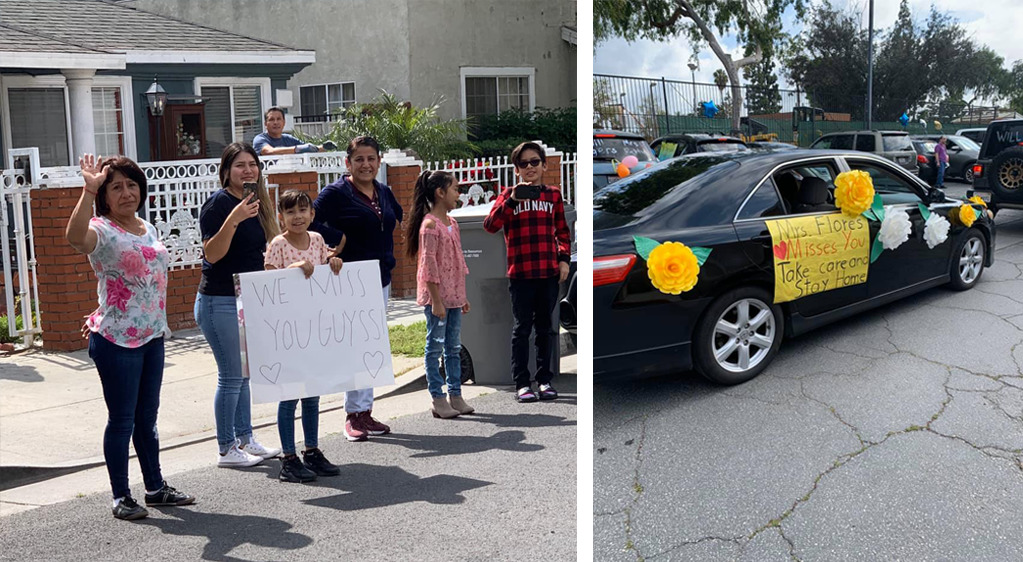
Teachers and staff in Lynwood Unified School District organize a car parade to connect and say hello to students and their families, who were happy to see them from afar.
Styles said, “I think what this [shutdown] has done for us as a profession, is it has reminded us why we got into education. And it has showcased how much educators truly care about all kids—all kids. I think it’s allowed us to become a kid again and show how excited we are for working with the youth in America. I hope that we keep that re-energized ‘Why?’ on fire, as we get back to having kids in the building.”
To learn how districts in the Digital Promise League of Innovative Schools are advancing excellence and equity for every learner, join one of our upcoming virtual town halls and explore the Innovation Portfolios.
To join the League in taking action to ensure every student has access to devices and home internet, use the hashtag #ConnectKidsNow to voice your support.
By Elliott Barnes and Sara Mungall